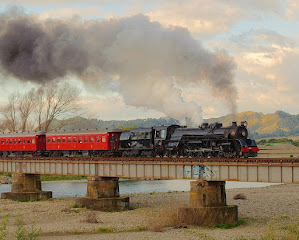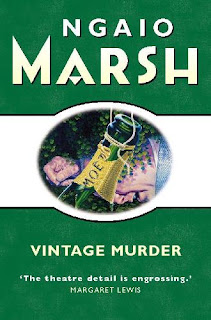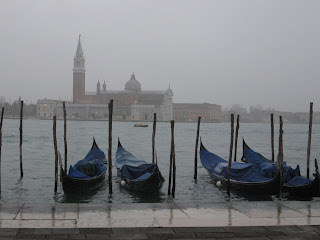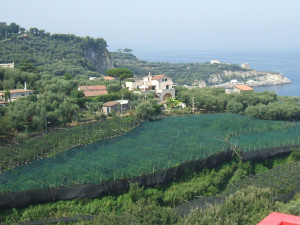Use your
memories to help you write with assurance
Many
crime writers believe the setting is one of the most important elements in a
novel and that it almost becomes an additional character in the story.
 |
The fishing village of Marina di Puolo gave me
the idea for my novel, The Shooting in Sorrento |
Whether
it is a country house in the case of Golden Age novels, a big city such as
London or Edinburgh, or the island of Sicily, as in the novels of Andrea
Camilleri, where the crime takes place has a big impact on the story and the
investigation that follows.
A lot of
writers become inspired by a particular place they have visited and their minds
immediately start inventing a mystery to happen there.
When I
interviewed the crime writer P D James in the 1990s she told me that her novels
were almost always inspired by somewhere she had visited.
If you
are a new writer you should try to set a story in a place you know well so that
you can describe it convincingly and be accurate with the geography. Your
murderer should be able to get from one place to another in a realistic amount
of time, otherwise readers who also know the location will feel let down.
It is
tempting to choose a glamorous setting for your book so that readers can become
armchair travellers and enjoy visiting the sights along with your detective.
 |
I was intrigued by the gated entrance to some
caves just outside Marina di Puolo |
But many
writers have picked abattoirs, factories, power stations and crime ridden inner
city housing estates. As long as they have really known and understood their
location, they have been able to use it effectively.
Wherever
you decide to set your novel, you must visit it and get to know it well so that
you can present it authentically.
There are
exceptions, of course. I have read that H R F Keating wrote an entire series of
books set in India, featuring his character, Inspector Ghote, an Indian police
officer, and yet the writer himself had never been to the country, but had done
all his research from maps and books.
But on
the whole, it is better to know a setting well to be able to describe it
accurately. After all, it is one of the perks of being an author to have a good
excuse for frequent days out or holidays abroad.
For
years, I enjoyed holidays in Sorrento in southern Italy, vaguely thinking it
would make a beautiful setting for a detective novel or film and that no
British crime writer had ever used it.
But it
was only when I discovered some caves, while walking along the beach of a small
fishing village just outside Sorrento, that I got the beginnings of an idea for
a plot.
The caves
were at sea level and would have been below what was once a Roman villa,
providing the owners and their guests with access from the sea thousands of
years ago.
 |
The caves looked the perfect place
to hide a kidnap victim |
There
were some kayaks, paddles and some old fishing nets being stored in the caves now, behind
locked metal gates, but it occurred to me that a body could also be hidden
there, or a kidnap victim could be kept there. People could bring in contraband
items by sea and hide them in there. Or, a character could be imprisoned there
by someone who wanted to keep them out of circulation for a while.
When I
visited Positano by boat I saw that the coastline of Sorrento had many such
recesses at sea level that could be used in this way. They were places that
were inaccessible by car and even difficult to get to on foot, but were
perfectly accessible by boat if you knew the area well. That’s when the plot of
The Shooting in Sorrento occurred to me.
The book, my second
Butler and Bartorelli mystery, starts with a bridegroom being shot, seemingly at
random by a sniper, while posing for pictures in Piazza Tasso with his bride
after his wedding in Sorrento.
It was a
sight I had often seen over the years while on holiday in Sorrento, although,
of course, I had never seen anyone actually shot.
Journalist
Kate Butler and her partner, retired detective Steve Bartorelli, are staying at
the same hotel as the wedding party and Kate feels she has to help the family,
who speak no Italian and are traumatised by what has happened.
The years
I had spent sightseeing and shopping in the historic centre of Sorrento
helped me enormously in devising my plot as I was able to easily recall how
quickly you could get from one location, such as the Franciscan cloisters, to
another, Chiesa del Carmine, a baroque church that overlooks the main square,
Piazza Tasso.
 |
The cover of my mystery novel,
The Shooting in Sorrento |
With my
family I had regularly visited the beach of Marina di Puolo, which is out of
town on the Sorrentine peninsula, and I had great fun inventing an historic
villa with a terrace that overlooked the seafront as the home of one of my
characters.
Most
people will have a favourite city or holiday resort in their memory bank that
they can use as a location in a book and they will find it is a big help to be
able to know instinctively whether a character has to turn left, or turn right,
to reach a particular place. Also, they will know whether or not it is
practical to allow a character to run up a steep hill quickly to reach a place
in time for the murder.
If you
don’t want to use a real town or village as a setting, you can imagine one of
your favourite places that you already know well and move it to another part of
the country, or to a different country, and give it another name, but you will
still be able to rely on your memories of it to write about it with assurance.
Readers
frequently say they will put up with a lot provided a novel has a strong sense
of place, so the best settings to choose are the ones you know well and for
which you have genuine feelings.
The
Shooting in Sorrento is available as a paperback or Kindle ebook on Amazon.
Home





















